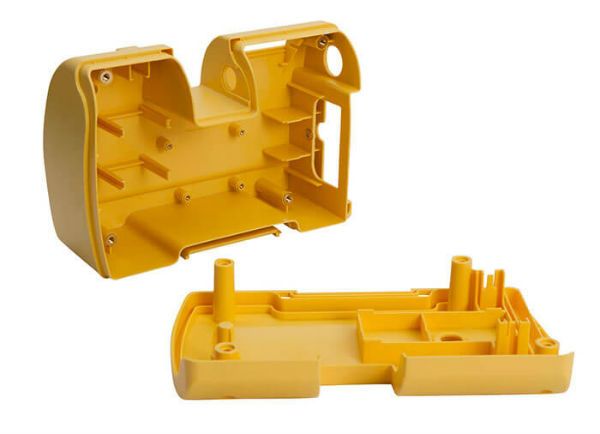Injection moulding is a great way to form thermoplastics into a range of shapes. These can be anything from a simple washer to a complicated electrical housing to a wheelie bin or car bumper.
Add to this flexibility, potential materials stretching from soft elastomerics to metal replacement polymers and the scope begins to become apparent.
We are all surrounded by injection moulded parts in every facet of our lives, from light switches to the electric kettles we use to the keys on our keyboards. The one thing all these items have in common is that they are produced in high numbers, frequently hundreds of thousands upwards.
And this is why moulding is so perfect, with cycle times measured in seconds, part costs tend to be measured in pence allowing for the product pricing that we all take for granted.
So huge flexibility, large range of materials and cheap parts, great, sorted.

From the perspective of understanding what drives the moulding cost we need to look at:
1) setup/cleandown, this would typically include installing the tool into the moulding press, drying and loading the specified material/colour, setting up the moulding conditions and running initial QA samples for approval. Then at the end of the moulding run purging out any residual material, applying any protection to the tooling before stripping it out of the press and returning it to stores.
2) moulding, this would be the production of the required number of parts
3) tooling and how we factor these costs into the unit prices.
The first of these is independent of how many parts are produced and often quoted as a ‘setup’ charge, especially if dealing with low volumes. It can take anything from an hour to half a day depending on a number of factors like the size of the tool, configuration, what material/colour options are being changed and inspection/dimensional requirements.
The moulding phase is driven by material costs, press costs and whether the press is running manned or unmanned.
Material costs vary substantially from one material to another, and also depend heavily on the quantity being procured. For example it is quite possible to see a 10:1 difference in price between buying a single 25kg sack and 3 tonnes of material. Colours can require masterbatch or compounding and add further to the costs especially if universal grades cannot be used.
Press size is a function of tonnage (force required to hold the mould tool closed during the injection cycle) and shot weight (amount of plastic delivered to the mould per cycle). The larger the press the more expensive it is both in terms of depreciation and power to operate. Thus bigger presses tend to run with higher utilisations making access for short runs more difficult.
Whether a press is run manned or unmanned is more often dictated by the tooling rather than the press. With small batches lose inserts may be used requiring an operator to load and unload the inserts every cycle. Alternatively there may be a post moulding operation that is completed by the operator whilst running the mould, this could be printing or packing.
Finally the tooling; its not just the tool cost that is important but matching it to the quantities required and deciding how to account for the cost. Tooling costs will vary dramatically depending on the specification. Thus getting this right and aligned to the production quantities is vital.
Then different companies account for tooling in different ways and thus it shows up in the unit price differently. Company A might choose to write off all tooling costs in the development phase, thus giving production a ‘free’ mould. Company B might predict the product life and write the tool off against parts produced, effectively wrapping an element of the tool price into every part, or Company C could treat the tooling as an asset and follow its own depreciation schedule. All will give different results.
Whichever option is employed it can be seen that there is a dramatic difference between:
a) a fully automatic tool, possibly with multiple cavities, running 24/7 on a press producing a quarter of a million parts per month, and
b) setting a tool to produce 200 parts using lose inserts with an operator manually packing each one.
Years ago it was simpler, no one would consider a mould tool for a short run requirement. Nowadays we get involved in moulding as few as 2 parts, we have multiple tooling options at our disposal both to advance prototyping and also tackle low volume production. That said in low quantities, the unit prices will never align with what can be achieved in high volume production, but at least this valuable process is an option to consider.
If you think injection moulding could be an option for your project please contact us. We will be happy to advise.



